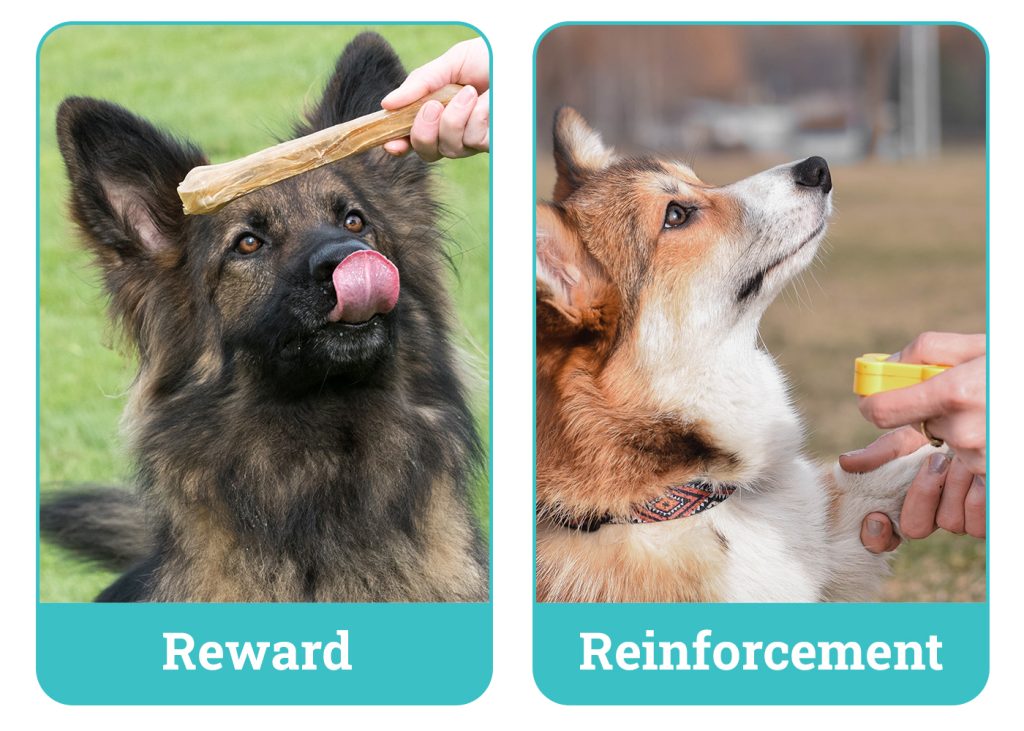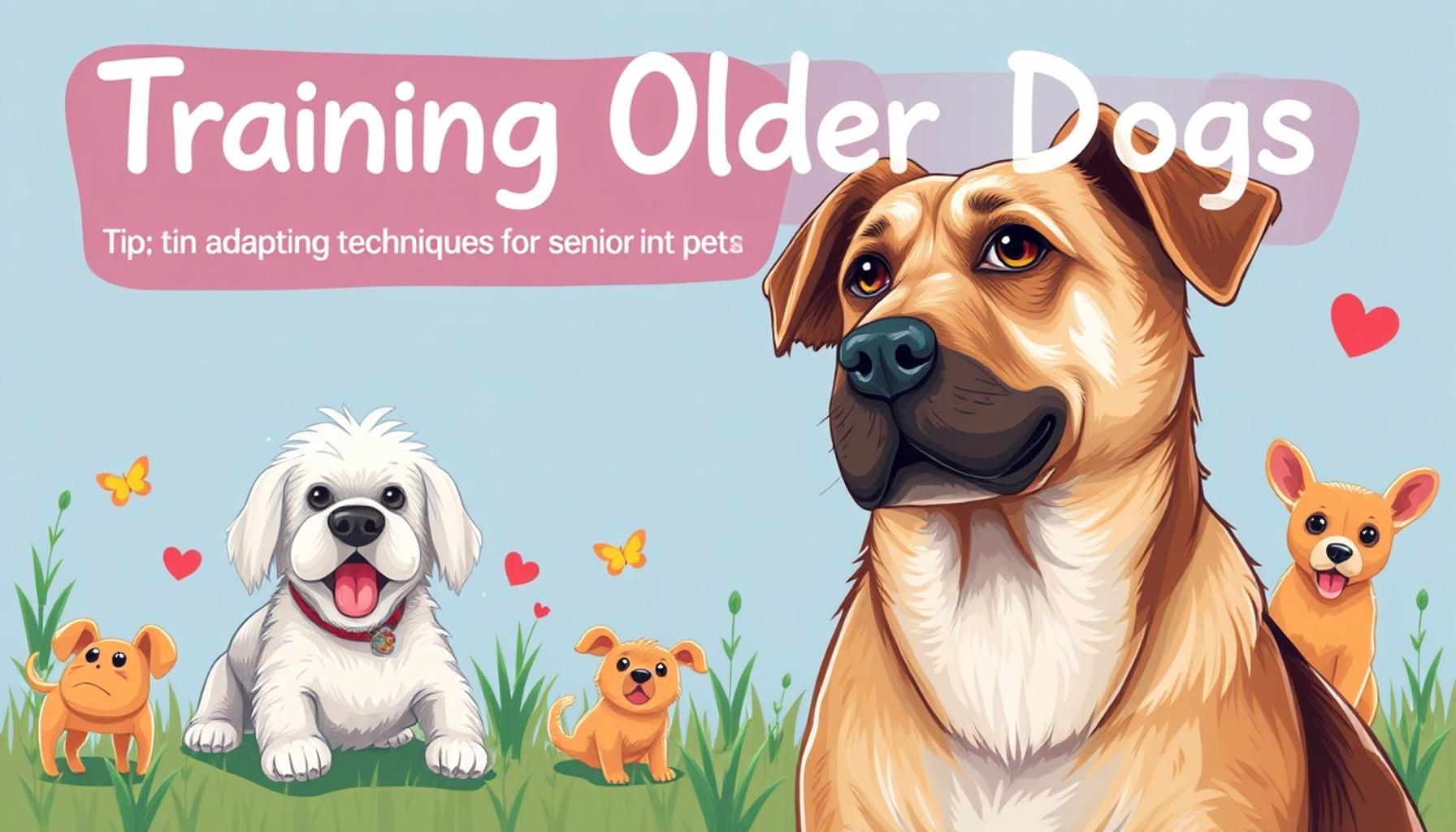Positive Training Tips for Dogs: Building a Bond Through Reinforcement

The Importance of Trust in Dog Training
Establishing a strong, trusting relationship with your dog is crucial for both their happiness and your peace of mind. When dogs feel secure and understood, they are more likely to exhibit positive behaviors and engage willingly in training. The beauty of positive training methods is that they not only focus on teaching your dog commands but also on nurturing the bond you share. With proper reinforcement techniques, you can create an enjoyable and effective learning environment that fosters long-lasting connections.
Key Components of Positive Training
Several fundamental components enhance the effectiveness of positive training methods:
- Reinforcement: Rewarding desired behavior encourages your dog to repeat it. For example, if your dog sits on command, offering a treat or praise not only reinforces that action but also connects the behavior with positive experiences.
- Timing: Immediate rewards are essential. Dogs thrive when they can associate their actions with outcomes. Delivering a treat or verbal praise right after your dog performs the desired behavior ensures clear understanding.
- Consistency: Regular training sessions solidify learning. Just as a child benefits from routine, dogs prosper from consistent commands and expectations, reinforcing their understanding of what behaviors are acceptable.
- Patience: Training can be a slow process, and it’s essential to remain calm and positive, especially when progress appears sluggish. A relaxed approach encourages your dog to feel safe, allowing them to learn at their own pace.
The Joy of Incorporation
Incorporating fun into your training sessions can strengthen your connection. Engaging activities like playtime or socialization with other dogs provide a joyful atmosphere conducive to learning. These experiences make training less of a chore and more of an opportunity to bond. For instance, using toys or games, such as fetch or tug-of-war, can teach your dog commands while also creating cherished moments together.
Dogs learn best when they feel secure and loved, which accentuates the importance of positive reinforcement. It is not just about correcting unwanted behaviors but also about emphasizing and rewarding the good ones. You’ll find that engaging with your dog using positive methods not only builds skills but also enhances their character and confidence.
Exploring the Benefits
As you implement these training tips, you may discover remarkable changes in your and your dog’s relationship. Training sessions can transform into opportunities for shared triumphs and understanding, leading to a flourishing partnership. By embracing the power of reinforcement, you can expect not just improved behavior but also a deeply rooted connection that stands the test of time.

Ultimately, positive training fosters a sense of belonging for your dog. As they respond to your cues, enjoy treats, and share playful moments, a special bond flourishes, making your journey together truly rewarding.
DIVE DEEPER: Click here to learn more about balanced nutrition for your pet’s health
Understanding Your Dog’s Unique Personality
To foster a successful training experience, it is crucial to recognize that every dog is different. Just like humans, dogs possess distinct personalities, temperaments, and learning styles that can greatly influence their response to training methods. By taking the time to understand your dog’s unique traits, you can tailor your positive training approach to better suit their needs, making the bonding process even more effective.
Identifying Your Dog’s Learning Style
Dogs typically respond to various forms of learning, including visual, auditory, and kinesthetic. Understanding your dog’s preferred learning style can enhance their training experience. Here are a few key indicators to help you identify how your dog learns best:
- Visual Learners: These dogs may respond better to hand signals and visual cues rather than verbal commands. Incorporating gestures can make training sessions more engaging for them.
- Auditory Learners: Some dogs are more responsive to sounds and verbal cues. These dogs thrive on clear verbal commands and may appreciate a cheerful tone during training.
- Kinesthetic Learners: These dogs often learn best through hands-on activities, such as physically manipulating objects or engaging in play. Using toys and active games is a great way to capture their attention.
The Impact of Environment on Training
Your dog’s training environment plays a significant role in their success. A calm and controlled space allows them to concentrate on learning without distractions. Consider the following elements when setting up your training sessions:
- Minimize Distractions: Choose a quiet location, free from loud noises and other animals. This helps keep your dog’s focus where it belongs—on you and the task at hand.
- Positive Reinforcement Tools: Prepare your training toolkit with treats, toys, or clickers that motivate your dog. These tools are essential for effective reinforcement, allowing you to recognize and reward good behavior immediately.
- Comfortable Setting: Make sure your dog feels comfortable in the training area. Providing a familiar and cozy spot where they can sit or lie down can help alleviate anxiety and encourage participation.
Building Engagement and Trust
One of the critical aspects of positive training is maintaining your dog’s engagement throughout the process. Keep training sessions short and fun to hold their attention. Dogs thrive on interaction and stimulation, so incorporating games, challenges, and varied activities can keep the bond with you strong. Regularly changing up your training routine not only aids in keeping your dog interested but also contributes to their growth as they learn to adapt to new commands and situations.
As you navigate through the nuances of training, remember that the strength of the bond between you and your dog is fundamentally built on trust, understanding, and positive experiences. By focusing on their personality and learning style, creating a suitable environment, and keeping the sessions dynamic, you’ll set the stage for a meaningful relationship rooted in respect and love, paving the way for a well-trained and confident companion.
| Advantage | Description |
|---|---|
| Enhanced Communication | Positive reinforcement fosters a clearer understanding between the owner and the dog, enabling both to effectively communicate needs and behaviors. |
| Strengthened Bond | Using rewards creates a trusting relationship, allowing dogs to feel secure and confident, thus deepening the emotional connection. |
| Long-lasting Results | Behaviors learned through positive reinforcement are more likely to last over time, leading to better long-term behavior modifications. |
| Increased Motivation | Dogs respond enthusiastically to positive training, which not only boosts their willingness to learn but also makes training sessions enjoyable. |
Positive training techniques revolve around the principle that rewarding desirable behavior encourages dogs to repeat that behavior. This method is backed by extensive research in animal psychology, demonstrating that reinforcement can lead to lasting changes in both behavior and overall disposition. It is crucial to note, however, that timing and consistency in delivering rewards are essential for maximizing the effectiveness of positive reinforcement.Additionally, incorporating a variety of rewards, such as treats, praise, or playtime, creates a rich training environment that keeps dogs engaged and eager to participate. The focus on building a bond through reinforcement not only helps in obedience but also contributes to a more harmonious living situation for both owners and dogs. These techniques can help in addressing common behavioral issues effectively while maintaining a positive and nurturing atmosphere.
DISCOVER MORE: Click here for insights on customized accessories
Establishing a Consistent Training Routine
Consistency is a key element when it comes to positive training. Establishing a routine not only helps your dog understand what is expected of them, but it also reinforces their learning process. Dogs thrive on predictability, and a regular training schedule provides a framework within which they can flourish. Here are some important considerations for creating an effective training routine:
Frequency and Duration of Sessions
The frequency and duration of your training sessions can greatly affect your dog’s ability to learn. Ideally, short and frequent training sessions of around 5 to 10 minutes can be more effective than longer, less frequent ones. This approach allows for concentrated focus without overwhelming your dog. For instance, consider breaking up training into multiple short sessions throughout the day—perhaps one in the morning, one at lunch, and another in the evening. Consistent repetition during these intervals solidifies their understanding of commands and behaviors.
The Importance of Timing
When utilizing positive reinforcement, timing is essential. Immediate rewards—whether they are treats, praise, or toys—create a clear association between the behavior and the reward. If there is a delay, your dog may become confused about what they are being rewarded for. For example, if your dog sits on command and receives a treat three seconds later, they might associate the reward with any action they were doing at that moment instead of the act of sitting. Therefore, quick rewards help reinforce the desired behavior effectively and encourage your dog to repeat it.
Utilizing Variable Reinforcement
While regular treats and praise are excellent tools for reward-based training, incorporating variable reinforcement can take the bond between you and your dog to new heights. Instead of offering a reward every time your dog performs a desired behavior, mix it up by sometimes withholding the reward. For example, if your dog reliably comes when called, try rewarding them every other time or even mixing in a higher value treat occasionally. This technique not only strengthens their recollection of the command but also keeps them guessing, making the training sessions more engaging and exciting.
Creating Fun Learning Experiences
Training should be an enjoyable experience for both you and your dog. To foster a sense of joy in learning, consider incorporating games into your training sessions. Exercises like hide and seek, where your dog finds a hidden treat or a toy, can apply training in a fun and interactive way. Additionally, agility training courses, which involve running through tunnels or over jumps, are excellent for building both physical skills and boosting confidence in your dog. These activities not only reinforce commands but also strengthen the overall bond between you and your furry friend.
By establishing a routine that emphasizes consistent sessions, appropriate timing, variable reinforcement, and engaging activities, you set a solid foundation for effective training. This structured yet fun approach reinforces the positive relationship you are building with your dog and fosters an environment where learning is a delightful journey rather than a chore.
FOR MORE TIPS: Click here to enhance your training
Finding Harmony in Training
In conclusion, positive training is not just a method; it’s a philosophy that nurtures a lasting bond between you and your dog. By focusing on rewarding desired behaviors, establishing a consistent routine, and incorporating fun into the learning process, you create an environment where both you and your furry companion can thrive. As you implement techniques like immediate rewards, variable reinforcement, and enjoyable activities, you empower your dog to learn and grow while ensuring that each training session is a source of joy rather than a chore.
The journey of positive training is unique for every dog, reflecting their personality and your connection. It’s essential to remain patient and adaptable, as each dog progresses at their own pace. Remember, understanding the emotional and psychological needs of your pet is crucial to reinforcing good behavior effectively. With time, love, and consistent effort, you’ll not only teach your dog commands but also cultivate trust and respect.
As you venture into the world of positive reinforcement training, consider that the bond built through these techniques enriches your life together. The skills you impart to your dog will not only enhance their behavior but will also contribute to lifelong companionship filled with joy and mutual understanding. So, grab those treats, and get ready to unlock a world of possibilities where training becomes a delightful experience that strengthens your relationship every day.


